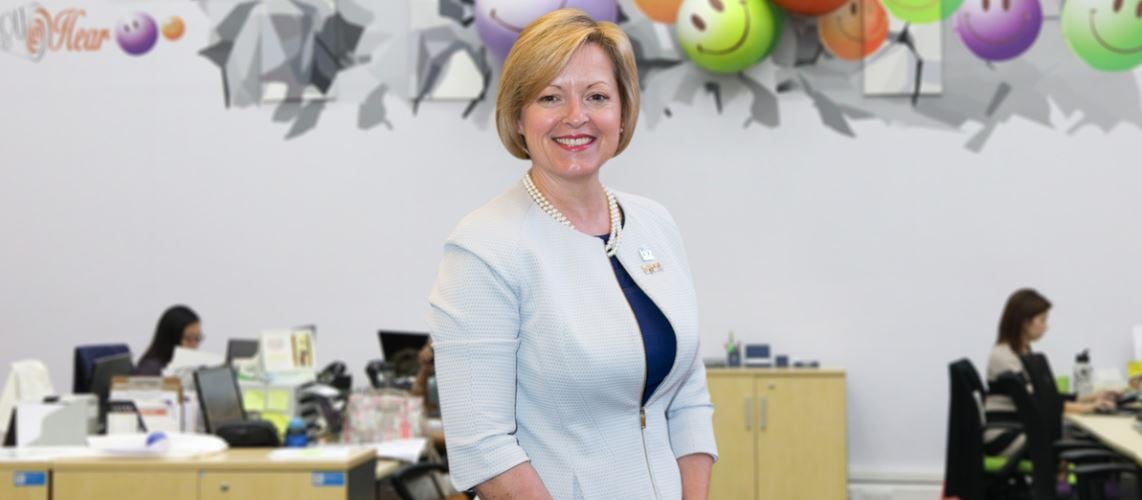Biz Group CEO and founder Hazel Jackson is the guest writer this week, exploring the L&D community returning to the 'Learning Equation'.

With the sudden and unexpected arrival of COVID-19, the learning and development community turned upside down. As believers in LearningJourneys™, BC (Before COVID-19), we helped our core clients map long term learning paths with a clear ROI or ROE at the end of each journey. They were in place to solve a defined business need.
Overnight, not only did the methodology of learning change from ‘face to face’ to ‘virtual’, but also an organisation’s ability to think over many months changed. Instead, they zoomed in to something they needed for the next week. I believe, like many training providers globally, we responded quickly, adapting our approach and meeting clients at their point of need. Learning content was tailored to meet a change in medium, but also a difference in the circumstances leaders faced with working from home and managing remote teams.
As we settle into month six of DC, ‘During COVID-19’, and with risks of a second wave occurring in some countries around the world, I think it’s time to settle back to looking at the bigger picture, virtually zooming out, looking at what has changed and what should remain the same in the world of learning.
As this is my current opinion, feel free to challenge me with your perspective! If there is one thing, I’ve learned through 2020, is that collaborating, listening and learning from others (especially those I have previously labelled as competitors) has helped me survive with some level of sanity!
What has not changed:
- Companies should start with a clear definition of the Business Problem or Business Metric that they intend to impact through training. Beginning with the End in mind remains the correct starting point, even if the time frame is shorter than usual.
- Picking a learning methodology to suit your audience, the topic, and the potential constraints are critical.
It is still not one size fits all. And digital is not one size at all. I continue to be surprised by perceptions that all digital learning is the same (this table is a quick reference guide for the different approaches and when to use what). - Learning Technology is here to stay.
We have all adapted much faster than we ever thought was possible to the new and sometimes the old tools that have been available to us. Many of our clients in the Middle East are now saying 70-80% of their learning moving forwards needs to leverage technology. But as per point 2 – that means a mix of technology solutions. - Live Interaction beats asynchronous recorded content hands down.
Like many I’ve joined hours of learning through virtual platforms in the last few months. When I attend, and there is participant interaction, I’ve engaged and taken away critical learning. When I observe and only listen, I’ve taken away less. When I miss the live event and receive the recording, or access to the library version – if I listen at all, I probably speed up the playback. It doesn’t replace the power of being in a room with other humans, but live virtual sessions, with engaging facilitation, is pretty damn close. And they are here to stay.
- Live in Person Events will still have a role.
Although there has been a significant shift towards virtual events due to the sudden restrictions placed on face-to-face events overnight, live in-person events will still play a vital role in the L&D community. We recently surveyed our community on LinkedIn and asked them how ready you would feel about attending a face-to-face event, with 68% of respondents voting ‘Ready’ compared to 32% answering ‘Not Ready’. This proves that people miss everyday human interactions and networking in-person, so it’s just up to how we focus on health and safety at events in the future.
What has changed:
- We have experienced the joy of learning for shorter, more concentrated spurts.
Perhaps it’s a few minutes with a digital asset, or live virtually for 2 or 4 hours at a time rather than spending a whole day. This has opened up everyone’s eyes to more dynamic, bite-sized learning and where possible making it closer to business and the point of need. - Learning Topics – have changed for now.
The volume of content around managing remote teams, managing hybrid teams (some in the office, some at home), be resilient, be an agile thinker and lead through change have sprung up in 100’s of different formats, from HBR to local providers. From extended programs to free webinars, there is no shortage of ‘how to’ help around these hot topics.
- We are more open to experimentation.
Previously, when we shared ideas around entirely new ways to deliver learning content, our clients were hesitant; in fact, some were utterly resistant. Now when we talk about adaptive learning, microlearning and e-learning, they lean in and ask more questions. As we have forced ourselves to explore the unknown, our L&D community (and their hierarchies) has been more open to the unknown as well.






